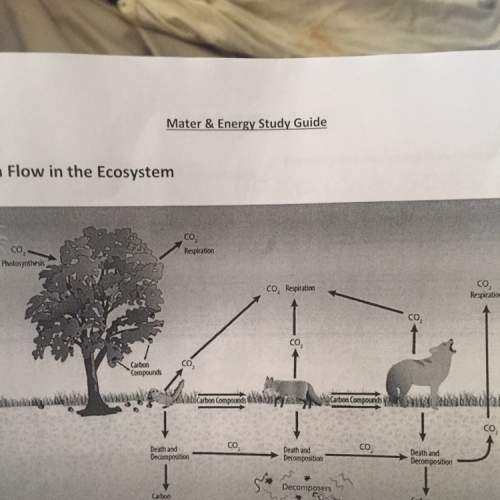
Biology, 28.04.2021 04:20, irickkadenl
Pl help
Commensalism is a symbiotic relationship in which one organism benefits and the other organism neither benefits nor is harmed.
Mutualism is a symbiotic relationship in which both organisms benefit.
Parasitism is a symbiotic relationship in which one organism benefits and the other organism is harmed.
Predation is a relationship in which one organism preys on (and eats) another organism.
Competition is relationship in which two organisms must fight (directly or indirectly) for resource
Objective:
Given a description of the relationship between two organisms, determine if their relationship is competition, commensalism, predation, mutualism, or parasitism.
1. Polar Bear and Seal: A polar bear hunts and captures the seal for its food.
2. Lice and Humans: Lice attach to human hair and enjoy the warmth given off by the human. They eat tiny amounts of human blood, causing the human to have little red bumps that are quite itchy. They may also transmit disease to the human.
3. Male lions: Adult male lions will fight each other for control over a pride and mating rights.
4. Goby Fish and Sea Urchins: The goby fish live amongst the sea urchins and are provided protection from their predators.
5. Wolf and Caribou: The wolf hunts and kills the caribou for its food.
6. Bats and White-Nose Fungus: The fungus grows over the bat’s face during hibernation which can kill the bat or cause it to wake up from hibernation early and starve.
7. Hermit Crabs and Snails: Hermit crabs live in abandoned shells made by snails.
8. Boxer Crab and Anemone: The boxer crab carries a pair of small anemones in its claws. When a predator approaches, it waves the anemones around which present its stinging tentacles and deters the predator. The anemones get small particles of food from the crab when it eats.
9. Bear and Salmon: The bear catches salmon in the river and eats it for food.
10. Grass and Oak Trees: Oak trees grow tall and put their branches out wide to collect sunlight. This shades the grass growing underneath from getting sunlight.
11. Mycorrhizal Fungi and Plants: The mycorrhizal fungus grows into the roots of some plants and gets nutrients from the plant. The fungus helps the plant absorb inorganic nitrogen and phosphorus from the soil. Some fungi also secrete antibiotics, which can help protect the plant from parasitic fungi and bacteria.
12. Bison and Cowbird: As bison walk through the grass, it kicks up insects like grasshoppers. These are seen and eaten by the cowbird.
13. Mistletoe and Oak Tree: Mistletoe extracts water and nutrients from the oak tree, causing harm to the oak tree.
14. Frog and Insect: The frog uses its long, sticky tongue to catch insects for food.
15. Tapeworm and Dog: The tapeworm enters the dog when the dog eats feces containing tapeworm larvae. The tapeworm attaches to the dog’s stomach and feeds off of the dog’s nutrients. This often causes harm to the dog.

Answers: 1
Other questions on the subject: Biology


Biology, 21.06.2019 20:00, zozo72
After reading the paragraph below, answer the questions that follow. researchers have created a robot that has a very thin leg that is moved by cardiac (heart) cells contracting in unison. the robot, made of a polymer similar to that used in making contact lenses, is bathed in heart cells with supporting cells, which then attach to the robot and provide movement as they contract. all of the cardiac cells working together can cause the robot leg to move in a way that individual cells could not. this is an example of a. emergent properties of cells. b. energy flow through an ecosystem. c. adaptation. d. internal environment regulation.
Answers: 3


Biology, 21.06.2019 23:50, jaiyaharoldjh
Legumes, a type of plant, require rhizobia, a type of soil bacteria, to survive since these organisms fix nitrogen during photosynthesis. rhizobia use the legumes for food. what would most likely happen to the legume population if rhizobia suddenly became extinct?
Answers: 2
Do you know the correct answer?
Pl help
Commensalism is a symbiotic relationship in which one organism benefits and the other orga...
Questions in other subjects:

Mathematics, 30.08.2019 04:30



World Languages, 30.08.2019 04:30

Mathematics, 30.08.2019 04:30

Biology, 30.08.2019 04:30



English, 30.08.2019 04:30







